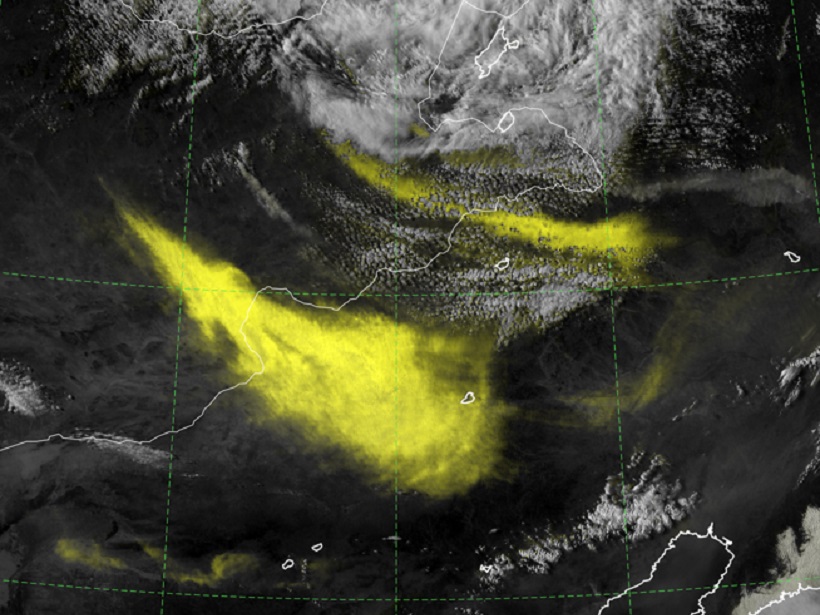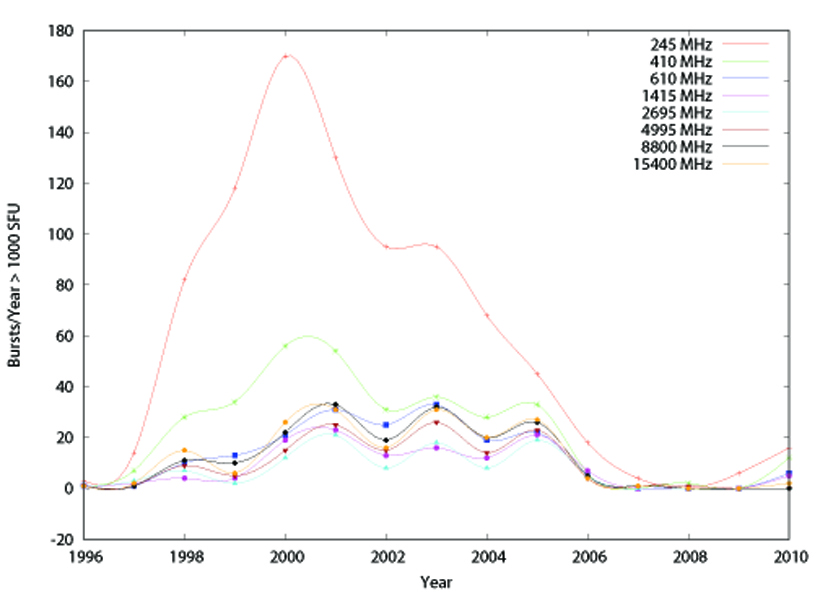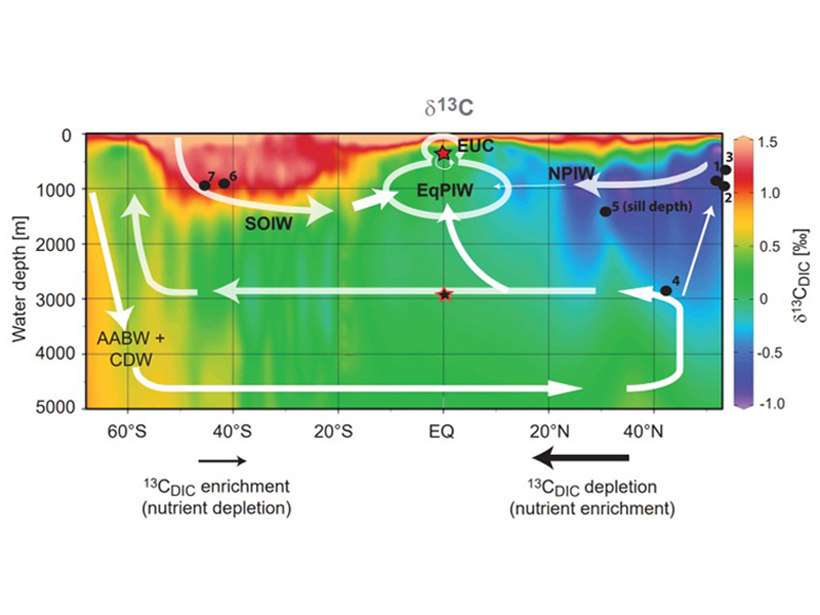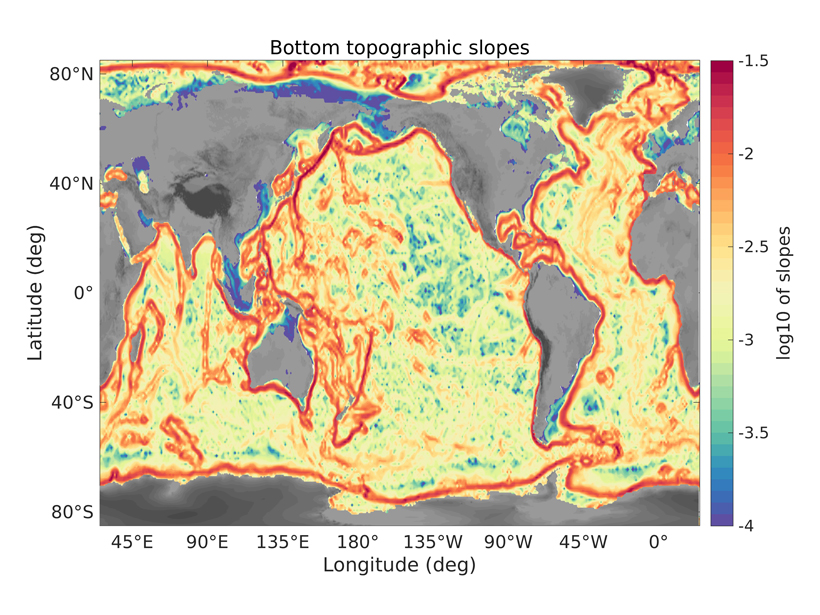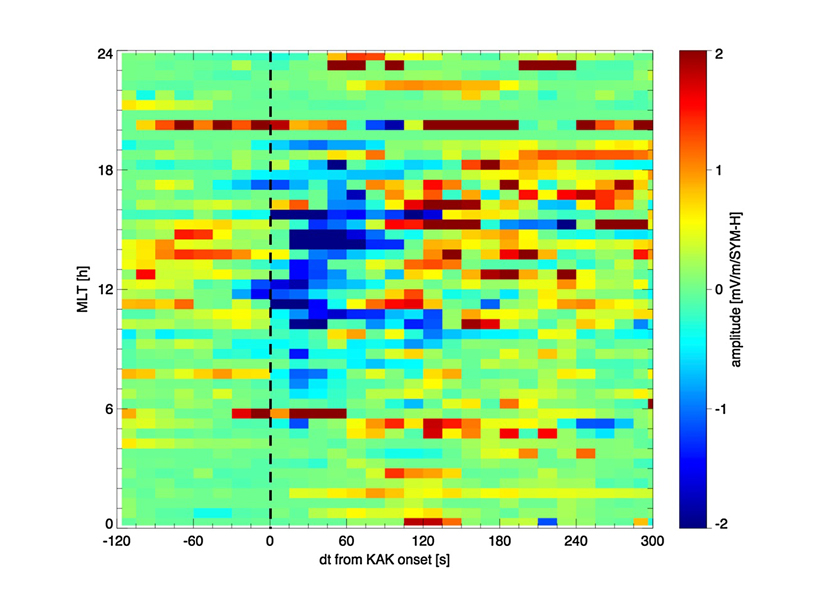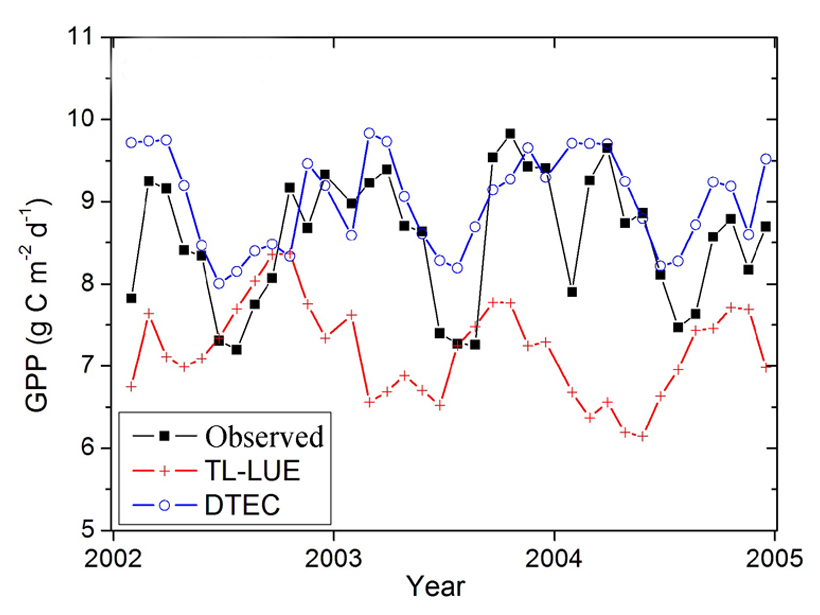When it comes to forecaster analysis of complex satellite imagery, less can be more, and a new technique aims to simplify imagery interpretation by suppressing the background noise.
Editors’ Highlights
Comparing the Accuracy of Geomagnetic Field Models
Improved accuracy and optimization of models could benefit many applications.
A Survey of Solar Radio Burst Statistics
National solar radio archive records have substantial missing data potentially affecting the ability to benchmark extreme solar events.
“North Pacific Nutrient Leakage” During Glacials
Carbon isotope data suggest an alternative source of nutrients to the Eastern Equatorial Pacific during glacial periods.
Where Did the Water Go on Mars?
Primordial solar storm conditions are believed to have significantly enhanced the loss of water and other atmospheric volatiles in Mars’ history.
Lightning Data Improves Precipitation Forecasts
Short-term forecasts of precipitation and convection can be improved when lightning data are assimilated in the Weather Research and Forecasting system.
Sloping Topography and Oceanic Surface Modes
An accurate understanding of the influence of ocean bottom topography helps to diagnose the velocities of subsurface currents.
Is Global Warming Suppressing Canonical El Niño?
A study explores the relationship between diverse El Niño events and the background state of the tropical Pacific.
Solar Wind Sets the Magnetosphere Ringing
A combination of data from satellites and ground-based instruments gives new insight into solar wind-magnetosphere-ionosphere interactions.
Improved Simulation of Gross Primary Productivity
A new model better explains seasonal variations in biomass.

